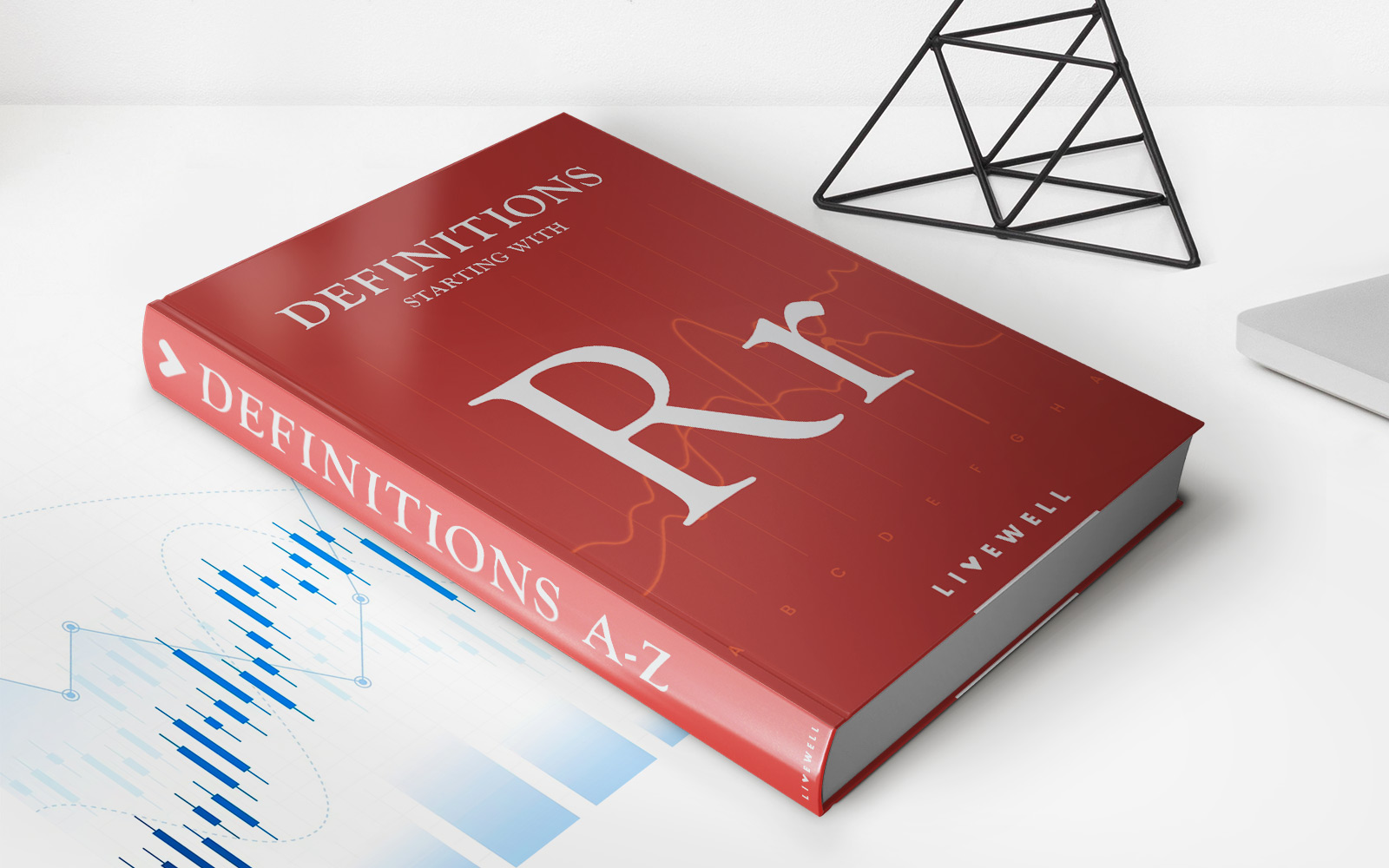Home>Finance>What Is A Secondary Beneficiary For Life Insurance?


Finance
What Is A Secondary Beneficiary For Life Insurance?
Published: November 12, 2023
Learn about secondary beneficiaries for life insurance and how they can play a crucial role in your financial planning. Explore the importance of naming a secondary beneficiary to ensure your financial security.
(Many of the links in this article redirect to a specific reviewed product. Your purchase of these products through affiliate links helps to generate commission for LiveWell, at no extra cost. Learn more)
Table of Contents
- Introduction
- Understanding Beneficiaries in Life Insurance
- What is a Primary Beneficiary?
- What is a Secondary Beneficiary?
- Importance of Naming a Secondary Beneficiary
- Rights and Responsibilities of Secondary Beneficiaries
- Contingent Beneficiaries and Secondary Beneficiaries: Is There a Difference?
- How to Choose a Secondary Beneficiary
- Frequently Asked Questions about Secondary Beneficiaries
- Conclusion
Introduction
Life insurance is an important financial tool that provides financial security and peace of mind to individuals and their loved ones. When you purchase a life insurance policy, one crucial decision you must make is choosing the beneficiaries who will receive the death benefit proceeds.
While most people are familiar with the concept of a primary beneficiary, many may not be aware of the role of a secondary beneficiary. In this article, we will explore what a secondary beneficiary is and why they are an essential element of a life insurance policy.
When you designate a beneficiary, you are specifying who will receive the policy’s death benefit if you were to pass away. This could be a spouse, child, family member, or even a charitable organization. The primary beneficiary is the first in line to receive the death benefit, while the secondary beneficiary comes into play if the primary beneficiary is unable to receive the proceeds.
Having a secondary beneficiary is crucial to ensure that the death benefit ends up in the right hands and follows your wishes. Without a secondary beneficiary, if the primary beneficiary is unable to receive the proceeds, the death benefit might be subject to probate or end up with unintended recipients.
In the following sections, we will delve deeper into the specifics of what a secondary beneficiary is, their importance, and how to choose the right one for your life insurance policy.
Understanding Beneficiaries in Life Insurance
Before we delve into the concept of secondary beneficiaries, it is important to have a solid understanding of beneficiaries in the context of life insurance.
When you purchase a life insurance policy, you have the opportunity to name one or more beneficiaries who will receive the death benefit in the event of your passing. A beneficiary is typically a person or entity that you choose to receive the policy’s proceeds.
The primary beneficiary is the person or entity who is designated to receive the death benefit. This is the individual or organization who will receive the funds first, and they are typically named by the policyholder at the time of application. The primary beneficiary can be a spouse, child, family member, or any other person or entity you choose.
In addition to the primary beneficiary, you also have the option to name a contingent beneficiary, also known as a secondary beneficiary. A contingent beneficiary is the backup option in case the primary beneficiary is unable to receive the death benefit. This could happen if the primary beneficiary passes away before the policyholder, or if they disclaim their right to the proceeds.
It is worth noting that you are not limited to naming just one primary beneficiary or one contingent beneficiary. You have the flexibility to name multiple beneficiaries, assigning each a specific percentage of the death benefit. For example, you may choose to allocate 50% of the proceeds to your spouse as the primary beneficiary, and the remaining 50% to your children as contingent beneficiaries.
Understanding the different types of beneficiaries is essential to ensure that you have a clear plan in place for the distribution of your life insurance proceeds. By designating primary and contingent beneficiaries, you can have peace of mind knowing that your wishes will be carried out and that your loved ones will receive the financial support they need.
What is a Primary Beneficiary?
In the realm of life insurance, a primary beneficiary is the individual or entity designated to receive the death benefit of a policy upon the insured person’s passing. This beneficiary holds the highest priority in terms of receiving the proceeds.
When selecting a primary beneficiary, it is important to choose someone whom you trust to handle the financial payout responsibly. Typically, policyholders select their spouse, child, or another family member as the primary beneficiary. However, it is not uncommon for individuals to choose a charitable organization or a business entity as their primary beneficiary.
When specifying a primary beneficiary, it is crucial to be clear and explicit in designating their portion of the death benefit. This can be done by assigning a specific percentage or dollar amount, or even by specifying a specific purpose for the funds. For example, you may designate 50% of the death benefit to your spouse and the remaining 50% to be divided equally among your children.
It is important to regularly review and update your primary beneficiary designation as your life circumstances change. Marriages, divorces, births, and deaths are all significant life events that may warrant modifications to your primary beneficiary selection. By keeping your beneficiary designations up to date, you can ensure that your wishes are accurately reflected and that the intended individuals or entities will receive the benefits.
It’s also worth noting that if your primary beneficiary predeceases you or disclaims their right to the death benefit, the proceeds will typically be distributed based on the policy’s contingent beneficiary designation or state law. This underscores the importance of having alternative options in place, such as secondary or contingent beneficiaries.
What is a Secondary Beneficiary?
A secondary beneficiary, also known as a contingent beneficiary, is the individual or entity who is designated to receive the death benefit of a life insurance policy if the primary beneficiary is unable to do so. Think of them as a backup plan in case the primary beneficiary is no longer alive, unwilling to accept the proceeds, or disqualified from receiving them.
Secondary beneficiaries become relevant when the primary beneficiary passes away before the policyholder or decides to disclaim their right to the death benefit. In such instances, the secondary beneficiary steps in to receive the proceeds. Having a secondary beneficiary ensures that the death benefit is not left in limbo or subject to potentially lengthy probate processes.
Like primary beneficiaries, secondary beneficiaries can be individuals or entities. Common choices for secondary beneficiaries include other family members, close friends, charitable organizations, or even a trust. It is important to carefully consider and select a secondary beneficiary who aligns with your wishes and intentions for the distribution of the death benefit.
When naming a secondary beneficiary, it is recommended to clearly outline their relationship to the policyholder or their purpose for receiving the proceeds. This can be done by specifying their name, relationship, or a clearly defined purpose in your life insurance policy documentation.
It’s important to note that secondary beneficiaries only come into play if the primary beneficiary is unable to receive the death benefit proceeds. If the primary beneficiary does accept the benefit, the secondary beneficiary does not have any rights to the proceeds. However, if the primary beneficiary refuses the proceeds or passes away before the policyholder, the secondary beneficiary can then step in to receive the death benefit.
Lastly, just like with primary beneficiaries, it is crucial to review and update your secondary beneficiary designation regularly. Life circumstances can change, and it’s important to ensure that your secondary beneficiary designation reflects your current wishes. Keep in mind that if your primary and secondary beneficiaries both pass away before you, the death benefit proceeds may be distributed according to the policy’s terms or state laws.
Importance of Naming a Secondary Beneficiary
When it comes to life insurance, the importance of naming a secondary beneficiary cannot be overstated. While the primary beneficiary is the first in line to receive the death benefit, having a secondary beneficiary provides a crucial safety net in case the primary beneficiary is unable to accept the proceeds. Here are several reasons why naming a secondary beneficiary is vital:
1. Ensuring smooth distribution: If the primary beneficiary is unable to receive the death benefit, such as in the event of their passing or refusal, having a secondary beneficiary ensures that the funds are distributed smoothly and efficiently. Without a designated secondary beneficiary, the death benefit may be subject to probate or could end up with unintended recipients, causing delays and potential complications.
2. Protecting against unexpected circumstances: Life is unpredictable, and unfortunate events can occur. By designating a secondary beneficiary, you plan for unexpected circumstances such as the primary beneficiary predeceasing you or disclaiming their right to the proceeds. This provides added protection and ensures that your intended beneficiaries receive the financial support you intended.
3. Granting control over asset distribution: Naming a secondary beneficiary allows you to maintain control over the distribution of your life insurance proceeds. By designating individuals or organizations as secondary beneficiaries, you ensure that the funds go to the people or causes that align with your wishes and intentions.
4. Avoiding unintended consequences: Without a secondary beneficiary, the distribution of your death benefit may be subject to state laws or default policy provisions. This can lead to unintended consequences, such as the funds going to an estranged family member, a former spouse, or even becoming part of your estate, potentially subjecting it to creditors or other legal complications.
5. Planning for multiple beneficiaries: A secondary beneficiary designation enables you to plan for multiple beneficiaries and allocate the death benefit according to your wishes. This can be particularly useful in situations where you want to distribute the funds among different family members, charities, or other entities.
Overall, naming a secondary beneficiary provides an essential layer of protection and ensures that your life insurance proceeds are distributed in accordance with your desires. It allows you to maintain control over your assets and provides peace of mind knowing that your loved ones or chosen organizations will receive the financial support you intended.
Rights and Responsibilities of Secondary Beneficiaries
Secondary beneficiaries play a significant role in the distribution of life insurance death benefits. While their rights and responsibilities may vary depending on the specific policy and jurisdiction, there are some general aspects to consider:
Rights of Secondary Beneficiaries:
1. Right to the Death Benefit: If the primary beneficiary is unable to receive the death benefit, the secondary beneficiary has the right to step in and receive the proceeds. This ensures that the intended recipient receives the financial support outlined in the life insurance policy.
2. Right to Contest: In certain situations, a secondary beneficiary may have the right to contest the distribution of the death benefit. This can occur if there are disputes or challenges regarding the validity of the policy or the designation of the primary beneficiary.
Responsibilities of Secondary Beneficiaries:
1. Notification: Secondary beneficiaries have the responsibility to notify the insurance company of the primary beneficiary’s inability to receive the death benefit. This ensures that the appropriate steps are taken to distribute the proceeds to the secondary beneficiary.
2. Documentation: Secondary beneficiaries may be required to provide documentation or proof of their status as the designated secondary beneficiary. This can include submitting a death certificate of the primary beneficiary or completing any necessary claim forms provided by the insurance company.
3. Decision-Making: If the secondary beneficiary receives the death benefit, they may have the responsibility to make decisions regarding the management and use of the funds. This includes deciding how to invest or utilize the proceeds in a manner that aligns with the policyholder’s intentions.
4. Communication with Other Beneficiaries: In cases where there are multiple beneficiaries, the secondary beneficiary may have the responsibility to communicate with the primary beneficiary (if alive) or other contingent beneficiaries to ensure a smooth and fair distribution of the death benefit.
5. Tax Considerations: Secondary beneficiaries should be aware of any tax implications associated with the receipt of the death benefit. Depending on the jurisdiction and the specific circumstances, the proceeds may be subject to income or estate taxes. Seeking guidance from a tax professional or financial advisor can help navigate these considerations.
It’s important to note that the specific rights and responsibilities of secondary beneficiaries can vary based on the individual insurance policy terms, local laws, and contractual agreements. It is recommended to review the policy documentation and consult with legal or financial professionals to fully understand the rights and responsibilities associated with your particular situation.
Contingent Beneficiaries and Secondary Beneficiaries: Is There a Difference?
When it comes to life insurance, the terms “contingent beneficiary” and “secondary beneficiary” are often used interchangeably. However, there can be some nuances in their meaning and usage. Let’s explore the similarities and differences between these two designations:
Both contingent beneficiaries and secondary beneficiaries serve as backup recipients for the death benefit if the primary beneficiary is unable to accept it. They are contingency options to ensure that the proceeds are distributed according to the policyholder’s wishes. The main difference is often their placement in the beneficiary hierarchy.
Contingent Beneficiaries:
A contingent beneficiary is typically the next in line to receive the death benefit if the primary beneficiary cannot accept it. They are designated as backups to the primary beneficiary and have no rights to the proceeds unless the primary beneficiary is unable to receive them. Contingent beneficiaries come into play if the primary beneficiary predeceases the policyholder, refuses the proceeds, or is otherwise disqualified from receiving them.
Secondary Beneficiaries:
The term “secondary beneficiary” is often used synonymously with “contingent beneficiary.” However, in some cases, the term “secondary beneficiary” may refer to a secondary backup option after the contingent beneficiary. This means that if the contingent beneficiary is unable to accept the death benefit, the secondary beneficiary becomes the next recipient in line. In these scenarios, the secondary beneficiary serves as a double contingency, providing an extra layer of backup.
It’s important to note that the exact terminology and meaning of these designations can vary based on the specific policy, insurance company, or jurisdiction. Some policies may use one term exclusively, while others may use both interchangeably. It is recommended to review your policy documentation to understand how these terms are defined within your particular policy.
Regardless of the terminology used, the key takeaway is that both contingent beneficiaries and secondary beneficiaries serve as backup options to ensure the smooth distribution of the death benefit. Whether you refer to them as contingent or secondary beneficiaries, it is important to designate these backup recipients to account for unforeseen circumstances and protect your intended beneficiaries.
How to Choose a Secondary Beneficiary
Choosing a secondary beneficiary for your life insurance policy is an important decision that requires careful consideration. Here are some steps to help guide you in selecting the right secondary beneficiary:
1. Identify your intentions: Start by identifying your intentions for the distribution of the death benefit. Consider who you would like to receive the proceeds if the primary beneficiary is unable to accept them. Think about your relationships, financial obligations, and philanthropic desires.
2. Consider family dynamics: If you have a close-knit family, it’s common to designate family members as primary and secondary beneficiaries. Consider the needs and financial situations of your immediate family members, such as your spouse, children, or grandchildren.
3. Evaluate financial dependency: Assess the financial dependency of potential secondary beneficiaries. If someone relies on your income for support, designating them as a secondary beneficiary can provide much-needed financial stability in the event of your passing. This can include elderly parents, disabled siblings, or adult children experiencing financial hardship.
4. Think about future needs: Consider the potential future needs of your loved ones. Will they require financial support for education, healthcare, or retirement? Choosing a secondary beneficiary who can benefit from the death benefit in the long term can be a wise decision.
5. Account for life changes: Life circumstances change, so it’s important to regularly review and update your beneficiary designations. Marriage, divorce, the birth of a child, or the passing of a loved one may necessitate reevaluating your choices and ensuring that your secondary beneficiary designation aligns with your current wishes.
6. Consult with a professional: Seeking guidance from a financial advisor or an estate planning attorney can be beneficial when selecting a secondary beneficiary. They can provide valuable insights, help you navigate any legal considerations, and ensure that your beneficiary designations align with your overall financial and estate plan.
7. Be clear and specific: When designating your secondary beneficiary, be clear and specific in your documentation. Clearly state their name, relationship to you, and any specific instructions for the distribution of the death benefit.
8. Communicate your decisions: It is advisable to discuss your beneficiary choices with your primary beneficiary and potential secondary beneficiaries. Openly communicate your intentions and ensure that everyone understands their role and responsibilities in the event of your passing.
Remember, selecting a secondary beneficiary is an important decision that should be made thoughtfully and reviewed periodically to keep it in line with your current wishes and circumstances. By carefully considering these factors, you can choose a secondary beneficiary who will help ensure that your life insurance proceeds are distributed as you intended.
Frequently Asked Questions about Secondary Beneficiaries
Here are some frequently asked questions about secondary beneficiaries and their role in life insurance policies:
Q: What is the difference between a primary beneficiary and a secondary beneficiary?
A: The primary beneficiary is the individual or entity who is first in line to receive the death benefit of a life insurance policy. A secondary beneficiary, also known as a contingent beneficiary, comes into play if the primary beneficiary is unable to accept the proceeds.
Q: Do I need to have a secondary beneficiary?
A: While not mandatory, having a secondary beneficiary is highly recommended. It provides a backup option in case the primary beneficiary is unable to accept the death benefit, ensuring that the proceeds are distributed according to your wishes.
Q: Can I have multiple secondary beneficiaries?
A: Yes, you can name multiple secondary beneficiaries. You have the flexibility to specify the percentage or share of the death benefit that each secondary beneficiary would receive in the event they become the primary beneficiary.
Q: Can a secondary beneficiary override a primary beneficiary?
A: No, a secondary beneficiary cannot override a living and eligible primary beneficiary. The secondary beneficiary only comes into play if the primary beneficiary is unable to accept the death benefit or has predeceased the policyholder.
Q: Can I change my secondary beneficiary designation?
A: Yes, you can change your secondary beneficiary designation at any time, as long as the policy contract allows it. Life circumstances often change, so it’s important to review and update your beneficiary designations periodically to ensure they align with your current wishes.
Q: Can a secondary beneficiary be a minor?
A: It is generally advisable to avoid designating a minor as a secondary beneficiary. In such cases, the death benefit may be subject to a court-appointed guardian, which can delay the distribution of the funds. Instead, you may consider setting up a trust and naming the trust as the beneficiary for the minor.
Q: Can I designate different individuals as primary and secondary beneficiaries for different policies?
A: Yes, you can customize your beneficiary designations for each life insurance policy you own. This allows you to specify different primary and secondary beneficiaries based on your preferences and the considerations for each policy.
Q: What happens if there is no secondary beneficiary designated?
A: If there is no secondary beneficiary designated, the death benefit may be distributed based on the policy’s terms or state laws. This could result in the funds being subject to probate or distributed to heirs according to the default laws in your jurisdiction.
Q: Can I name a charity as a secondary beneficiary?
A: Yes, you can designate a charitable organization as a secondary beneficiary. This allows you to support a cause you care about, ensuring that the death benefit can have a lasting impact beyond your lifetime.
It’s important to consult with a financial advisor or an estate planning attorney to address any specific questions or concerns you have regarding secondary beneficiaries and their role in your life insurance policies.
Conclusion
Choosing beneficiaries for your life insurance policy is a critical decision that requires careful thought and consideration. While the primary beneficiary is the first in line to receive the death benefit, naming a secondary beneficiary provides an important backup option to ensure the smooth distribution of the proceeds in case the primary beneficiary is unable to accept them.
Naming a secondary beneficiary is crucial for protecting your intended beneficiaries and ensuring that your wishes are carried out. It helps avoid complications, delays, and unintended consequences that can arise if there is no backup plan in place.
When selecting a secondary beneficiary, it’s important to align your choice with your intentions and the financial needs of your loved ones. Consider the potential financial dependency, family dynamics, and potential future needs of your beneficiaries.
Regularly reviewing and updating your beneficiary designations, both primary and secondary, is essential to keep them in line with your current circumstances and wishes. Life events such as births, marriages, divorces, or the passing of loved ones may necessitate changes to your beneficiary designations.
Consulting with a financial advisor or an estate planning attorney can provide valuable guidance and ensure that your beneficiary designations align with your overall financial and estate plan.
To protect your loved ones and ensure that your life insurance proceeds are distributed as you intended, take the time to carefully select and name your primary and secondary beneficiaries. By doing so, you can have peace of mind knowing that your financial legacy will provide the support and security that your beneficiaries need after your passing.














